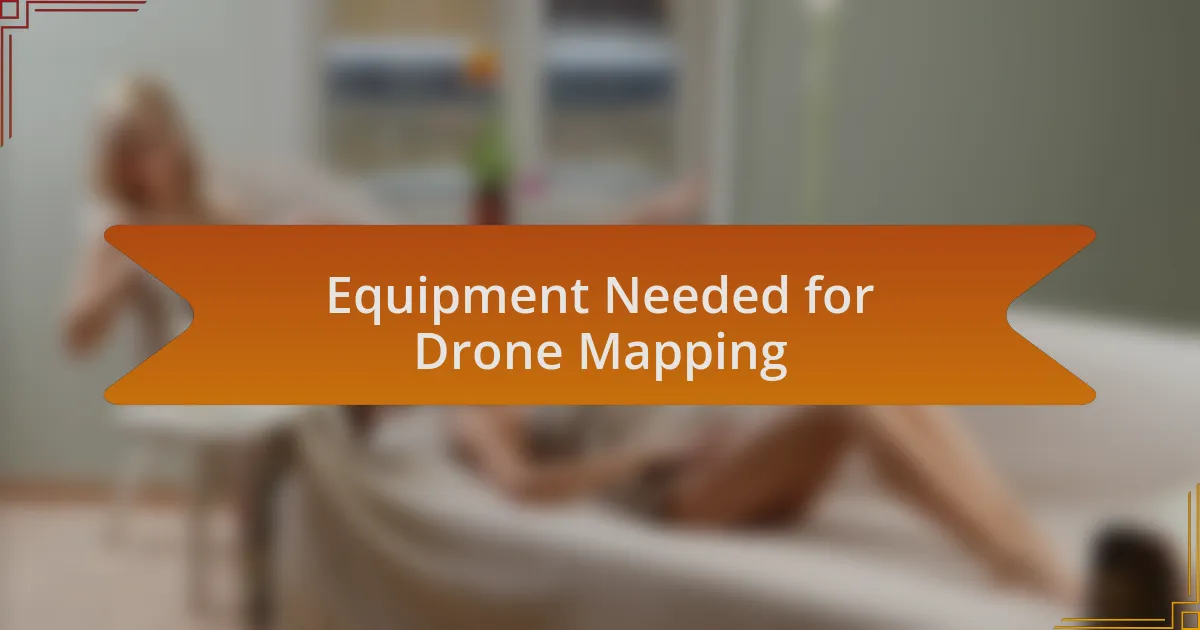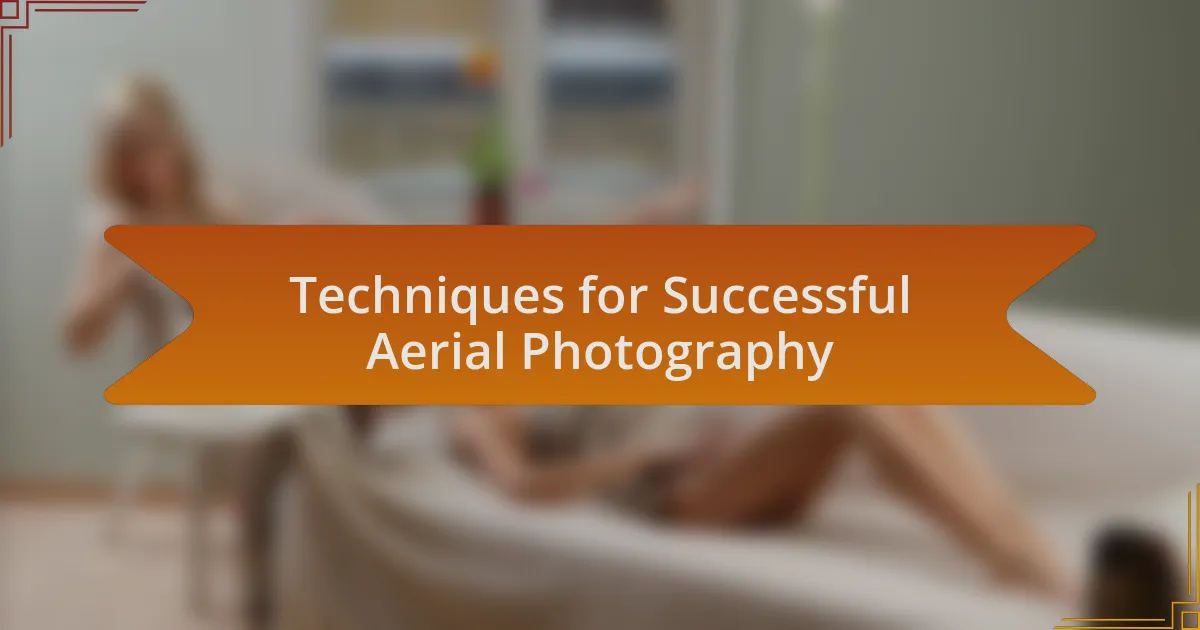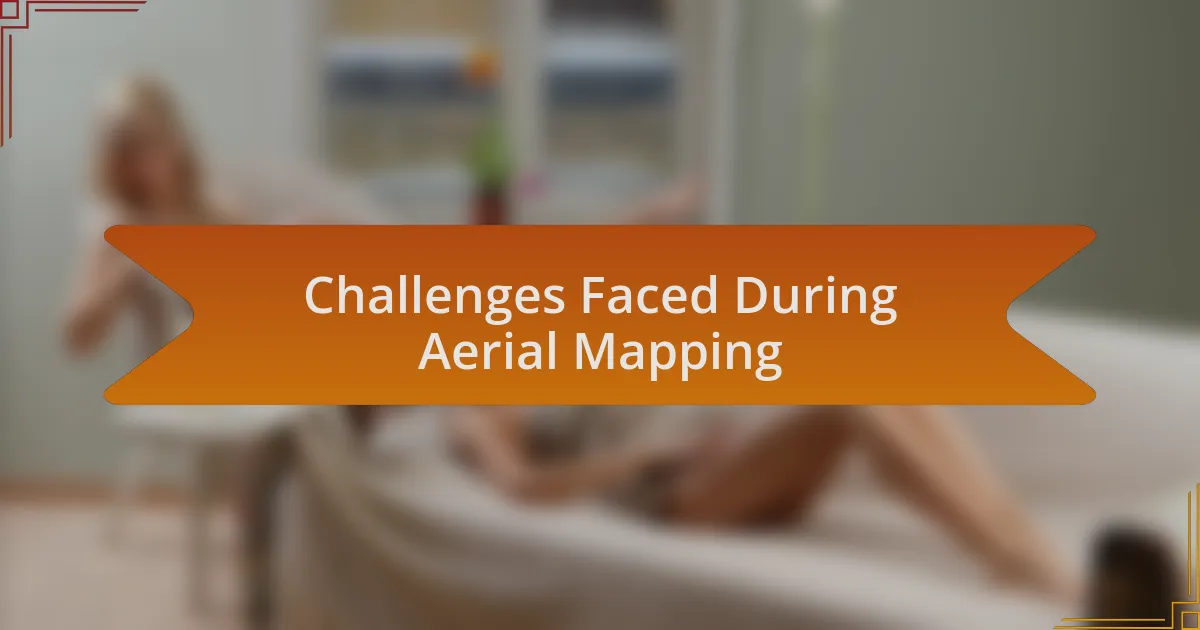Key takeaways:
- Drone mapping utilizes UAVs with high-resolution cameras to capture detailed geographical data, essential for urban planning and environmental monitoring.
- Key equipment for successful drone mapping includes high-quality drones with GPS, reliable cameras, and sophisticated software for data processing.
- Personal experiences in drone photography highlight the importance of light conditions, composition techniques, and altitude variations to enhance imaging results.
- Challenges such as navigating regulations, managing technical issues, and optimizing battery life are crucial considerations for drone users in diverse environments.

Introduction to Drone Mapping
Drone mapping is a revolutionary technique that has transformed how we capture and analyze geographical data. I still recall the excitement I felt during my first mapping session, watching a small drone rise into the sky, its camera ready to capture stunning aerial images. It made me wonder—how can a device so small provide such detailed insights about vast landscapes?
At its core, drone mapping involves using unmanned aerial vehicles (UAVs) equipped with high-resolution cameras and sensors to collect spatial data. The process not only enables detailed topographical mapping but also offers invaluable perspectives that traditional methods simply can’t match. For instance, I was amazed by how one flight could capture the intricate details of a coastline, revealing patterns that even the most experienced cartographer might overlook.
Moreover, the applications of drone mapping extend far beyond mere aesthetics; they are instrumental in urban planning, environmental monitoring, and disaster management. Each time I analyze a newly acquired set of aerial images, I’m struck by how much potential lies within those pixels—what new discoveries await us in regions waiting to be explored? These insights fuel my passion for aerial photography and underline the transformative impact of technology on our understanding of the world around us.

Equipment Needed for Drone Mapping
To embark on a successful drone mapping project, having the right equipment is crucial. A high-quality drone with GPS capabilities is the backbone of any mapping endeavor. I remember when I first used a drone equipped with RTK (Real-Time Kinematic) technology, which dramatically improved the accuracy of my maps—it’s astonishing how precise a digital representation can be.
Beyond just the drone itself, a reliable camera is key. I quickly learned that not all cameras are created equal; those with higher resolutions can capture much more detail. I vividly recall the thrill of capturing panoramic views of the Serengeti, where every blade of grass was crystal clear. The clarity in images not only enhances the mapping results but also makes the experience personally rewarding.
Finally, don’t overlook the importance of software for processing your data. I once struggled with basic programs, but once I upgraded to more sophisticated mapping software, everything changed. The way it transformed raw images into detailed 3D models was like magic—what was once just a bunch of images became a comprehensive visual narrative. Have you experienced that moment of transformation? It’s enlightening, to say the least.

Techniques for Successful Aerial Photography
When it comes to aerial photography, understanding light conditions is essential. I once set out at sunrise, believing it wouldn’t matter, only to find that the shadows were too harsh for my images. It’s fascinating how the soft, golden light during that early hour can transform your photographs, creating depth and enhancing textures in surprising ways. Have you experienced that magical hour?
Another vital technique is mastering the composition of your shots. I remember the excitement of framing a shot of a coastal landscape, paying close attention to the rule of thirds. It made a significant difference in how captivating the images turned out; they drew the viewer in, telling a colorful story about the vibrant culture of Zanzibar. If every image can evoke a sense of place, wouldn’t you want to apply these principles for maximum impact?
Lastly, don’t underestimate the power of altitude adjustments. Experimenting with different heights can yield distinct perspectives that reveal new details. There was a moment when I flew at various altitudes over a bustling market, and it struck me just how context changes with elevation. The higher I went, the more I captured intricate patterns of human activity, sparking a connection between the landscape and its inhabitants. What stories could your drone reveal from above?

Personal Insights from My Travels
Traveling for aerial photography has been a transformative experience for me, offering unexpected lessons beyond just capturing stunning visuals. During my time in Zanzibar, I encountered local fishermen at dawn, their silhouettes against the rising sun left a lasting impression on me. I realized that it wasn’t just about the shots I took, but the stories I was privileged to witness through my lens. Have you ever felt that a moment was richer than the photograph itself?
Navigating through different cultural landscapes, I learned how to connect with locals, which enhanced my aerial storytelling. One afternoon, while discussing traditional fishing methods with artisans, I discovered the depth of meaning behind each captured image. These conversations not only enriched my perspective but also guided my drone shots, allowing me to highlight the harmony between nature and human ingenuity. Isn’t it amazing how the connections you make shape your creative vision?
Amid the beauty of Zanzibar’s coastlines, I stumbled upon moments of serene stillness that struck a chord within me. I remember hovering my drone over an isolated beach, feeling the weight of nature’s quiet bliss. This experience reminded me that sometimes, it’s essential to pause and appreciate the simple wonders around us. Have you taken a moment to just soak it all in during your travels?

Challenges Faced During Aerial Mapping
When I first launched my drone in Zanzibar, I quickly encountered technical challenges that tested my patience. Strong winds can be a real adversary for aerial mapping. I remember one spellbinding afternoon, only to watch helplessly as the drone struggled against the gales, forcing me to rethink my approach. How often do we underestimate nature’s influence?
A significant hurdle I faced was obtaining the necessary permissions for aerial mapping. Each region has its own set of regulations that can be daunting to navigate. I vividly recall the anxious moments spent waiting for approvals, wondering if I would get the chance to capture the breathtaking landscapes from above. It made me realize how crucial it is to respect local laws and customs, don’t you think?
Finally, the challenge of battery life always loomed over me during my expeditions. I learned the hard way that I had to maximize short flight times while meticulously planning my shots. One late afternoon, I made the mistake of lingering too long at a particularly scenic spot and ended up hastily capturing the final frames as my battery indicator flashed red. It was a stark reminder that in this pursuit, time management is just as vital as technical skill. Have you ever felt the pressure of limited resources while chasing your passion?

Tips for Future Drone Travelers
When preparing for a drone trip, research is your best friend. I remember diving deep into local regulations before my visit to Zanzibar; this preparation helped me avoid any legal snags while giving me the freedom to explore. Have you thought about how the rules might change from one place to another, and how understanding them could enhance your experience?
Another essential tip is to pack extra batteries and memory cards. On one of my excursions, I had a near-miss when my battery ran out just before I captured the sunset over the turquoise waters. The frustration of having to watch the colors shift without being able to record them was a hard lesson in planning ahead. Can you imagine missing out on a stunning view because of a simple oversight?
Lastly, consider blending in with the local culture to enrich your experience. I made an effort to engage with the local community during my travels, and they offered invaluable insights that shaped my aerial perspectives. Isn’t it fascinating how the stories of the people can transform the way you see the landscapes you’re documenting?